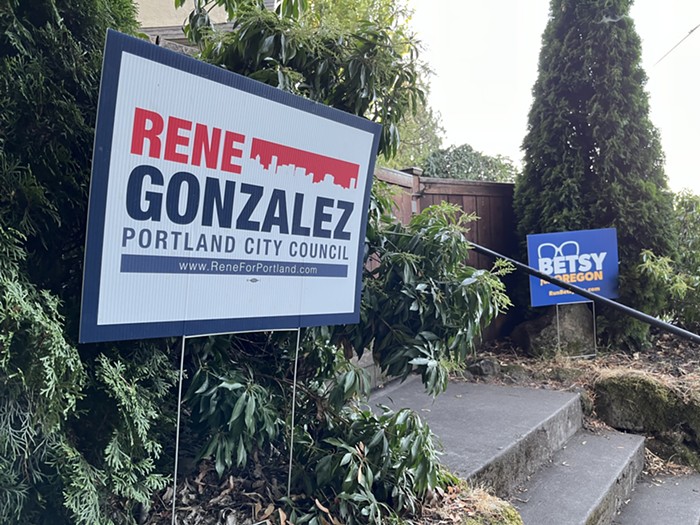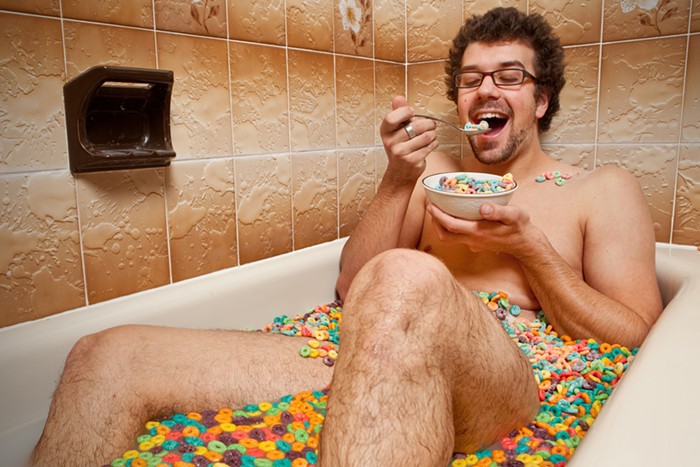Basil Hallward Gallery, 1005 W Burnside
I broke one of my own rules this week and talked with an artist to discuss his show before reviewing it. The artist was Brad Adkins, and I contacted him after first seeing Keep moving...there's nothing to see here at Powell's Basil Hallward Gallery. At a first visit, the show struck me as startlingly low-tech, deeply personal, and almost impossible to penetrate without gallery notes or a guide (a printed gallery guide had shown up by the show's opening). Knowing Brad's work with Charm Bracelet was of little help in making sense of the odd assortment of drawings, color xerox, greeting cards, and miscellaneous objects.
One of the first things Brad told me was that craftsmanship was his least favorite part of art making, which is probably the first thing anyone would notice upon seeing the show. His work is not about formalism, media application, or compositional strategies, but rather about making objects as vessels for ideas and thoughts. Since the visual payoff is so strikingly low, the artistic burden is cast on the conceptual roots of the pieces, and in many works, it can be supported. The piece I think about most is "Warmest Wishes," a color copy of a generic looking greeting card with flowers on it, no text inside, and a handwritten envelope addressed to the artist on a small shelf. The piece doesn't mean much until you learn that it's a replica of the card his grandmother sent him after the artist attempted suicide several years ago. Talk about a piece with gravity. Happily, not all of the pieces are so distressing. A pair of photographs show a suburban front yard in winter, with a rotund spiral made of snow circling inward. It looked like a chilly tribute to Robert Smithson, but as it turns out, Adkins did this in his parent's yard when he was 16, a dozen or so years before he had ever heard of earth art. Another color xerox that looks like a crudely Photo Shopped face-meld, à la Nancy Burson, is a novelty computer-generated image of what his Asian son would look like if he mated with himself.
The question is: Should you have to know these stories before seeing the art to appreciate the pieces? My knee-jerk answer is that the works should speak for themselves, but since I'm already breaking my own rules with this show, I'll endorse an exception here as well. Keep moving is honest and refreshingly free of affectation, and the overall effect is taking a penlight on an unguided tour of one man's brain. CHAS BOWIE












